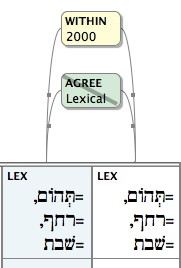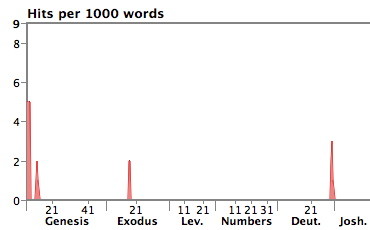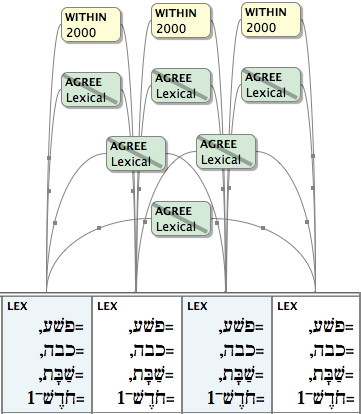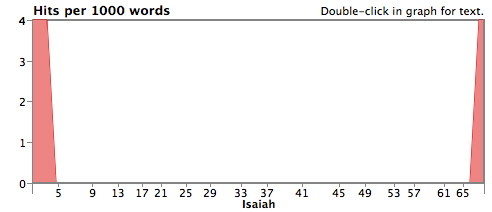Last week I showed how you could develop a construct search to find clusters of words. I then explained how that differs from using the INFER command, which is focused more narrowly on finding similar phrases. I also told of a support call in which this word cluster search had been just the thing a scholar had needed for his research.
In his dissertation, this scholar had noted a pattern in which certain words are used at the beginning and end of a literary unit, a literary technique known as an inclusio. He had apparently found this by doing searches for individual words and then collating the results, but he was looking for an easier way. To see if our word cluster search would give him the results he was looking for, I asked him to give me some example words we could test.
He mentioned that some vocabulary, such as תהום (“deep”), רחף (“to flutter”), and שׁבת (“to rest”) is used both at the beginning of Genesis and at the end of Deuteronomy. So we set up a simple Hebrew construct in which we searched for any two of those lexical forms:
As you can see, we used the LEX element to list the various lexical forms, and a negative AGREE to specify that the two words found together cannot be the same word repeated. We also set the WITHIN to a very broad 2000 words, since these words are used throughout the creation narratives of Genesis 1-3.
When we ran this search, the scholar was surprised to see that it only found two verses: Genesis 1:2 and Proverbs 22:10. What about all the other occurrences of these words throughout Genesis 1-3? We had specified the broad WITHIN precisely because we had wanted to find these words across verse and chapter boundaries.
I then had him open the More Options section of the Search window and note that the Search within every pop-up menu was set to Verse. No matter how broad we made our WITHIN in the Construct window, this setting was constraining the search to look for word clusters within the same verse. By selecting Book from this pop-up menu and rerunning the search, we were now able to find the results he expected.
By clicking the Details button and looking at the Hits Graph, we can see that these words are indeed found together at the beginning and end of the Pentateuch:
At this point, the scholar I was talking to was getting excited, so he gave me a new group of words to try in the book of Isaiah. This time we expanded the construct to search for four words found together. Here is the construct:
And here is the Hits graph. It’s precisely what you would expect a graph of an inclusio to look like!
Bear in mind that these are just some example searches this scholar and I tried in the course of a support call. To demonstrate an intentional rhetorical pattern like an inclusio you would obviously need to do a lot more research. The point is that Accordance gives you the tools required to do that work, as well as to visualize the fascinating results.





